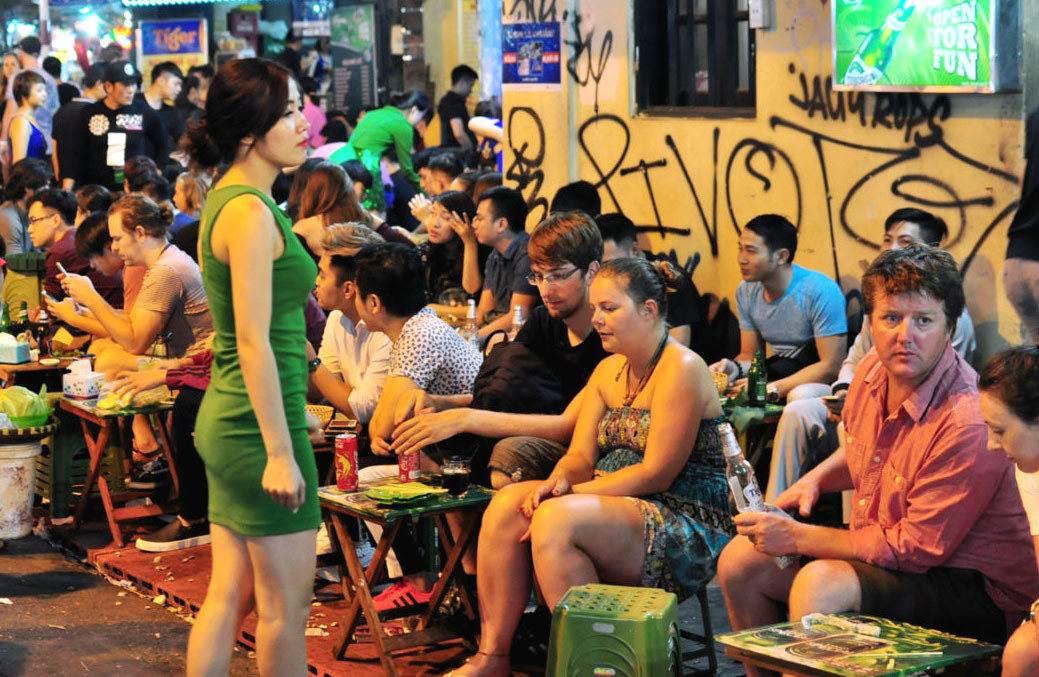
In the last three years, Hanoi, HCM City and Da Nang have been developing night-time economy of different types, from night markets, night eatery streets, 24 hr convenience store chains, walking streets and art performance streets, such as Ta Hien street in Hanoi, Bui Vien and Nguyen Hue in HCM City, and Ba Na Hills in Da Nang.
Of these, Da Nang has been the most impressive and bustling with street art programs, carnivals, scenography shows and firework festivals. The city has also expanded the walking space on An Thuong street and My An night beach, and organized a water/fire breathing performance at Rong Bridge on Friday and the weekends.
The measures have helped increase the number of domestic travelers to Da Nang. The figure even surpassed the one in 2019, the peak time before the Covid-19 outbreak.
Khanh Hoa provincial authorities have approved a project on developing a night-time economy by 2030. In the first phase, the province would set up walking streets, and organize shows, eatery streets, coastal bars and pubs, and sea sports, and ask shopping centers and supermarkets to close their doors later at night.
Lam Dong province has also launched a plan on the night-time economy in Da Lat City on a trial basis.
The special attention of local authorities and the heavy investment by tourism hubs in service centers and night-time tourism products are expected to attract and retain travelers for a longer time, and increase spending, thus helping increase revenue for localities.
However, analysts point out that night streets such as Ta Hien, Bui Vien and Nguyen Hue are scarce, and entertainment activities can only be found at restaurants or street eateries, bars, pubs or walking streets.
Meanwhile, most of the products displayed at night-time markets are low-cost with unclear origin. The revenue, therefore, remains modest.
A representative of a Hanoi-based travel firm said some new tourism products have been launched recently to diversify services, such as ‘Giai ma Hoang Thanh Thang Long’ (Decoding The Imperial Citadel of Thang Long) and 'Sacred Night – Glorious Vietnamese Spirit’.
However, most activities end prior to 10pm. Hanoi has opened a new walking street – Trinh Cong Son street in the West Lake area and the walking street in the Son Tay suburban area. However, the number of visitors there remains modest and eateries close their doors by 11 pm.
Noting that night-time economy means entertainment and dining activities from 6pm to 6am, Nguyen Quoc Ky from Vietravel Corporation stressed they must be programmed well in every area.
Johnathan Hanh Nguyen from IPPG noted that the night-time economy in Vietnam is simply understood as eating and playing; entertainment activities at night occur only on walking streets, at night markets or discotheque halls.
He went on to say that Vietnam lacks products which are valuable and diverse for travelers, and lacks attractive sites for them to visit and spend money.
Meanwhile, according to Ky, 70 percent of travelers’ spending is made at night.
Johnathan Hanh Nguyen noted that Vietnam has great growth potential in the number of travelers, but needs to reconsider the quality of services.
The total number of travelers to Vietnam is just 50 percent of Thailand and the spending of foreign travelers in Vietnam is just 40 percent. The figures are even lower compared with the spending of travelers to Singapore, the Philippines, Indonesia, Malaysia, South Korea and Japan.
Vietnam doesn’t have a duty-free shop system (such shops exist only at airports) or outlet centers which offer discount rates of 50-90 percent to lure shoppers.
Vietnamese travelers are willing to spend the last banknotes they have to buy cosmetics, household utensils and supplement food at the shops when they visit Thailand, South Korea and Japan.
A report showed that Vietnamese travelers were the biggest spenders in South Korea in 2022 with 197,000 won on average, compared to Japanese with 188,000 won and Chinese with 171,000 won.
Ngoc Ha